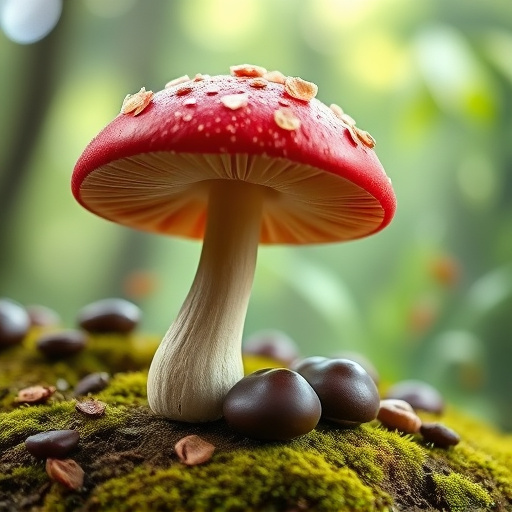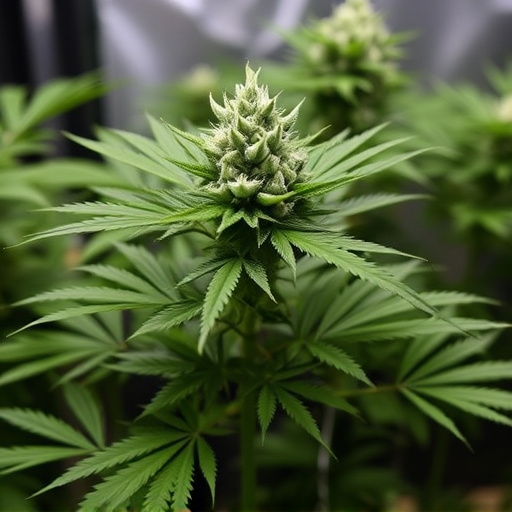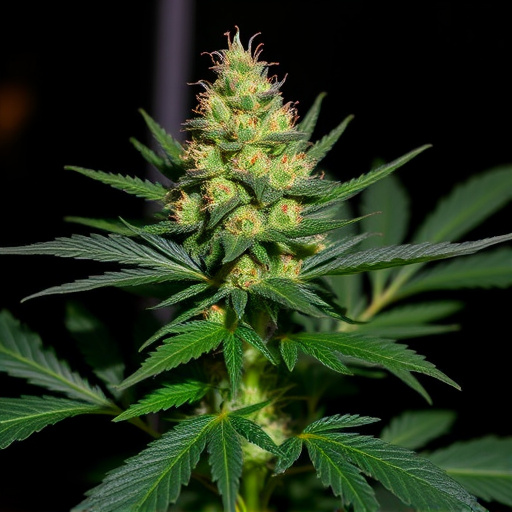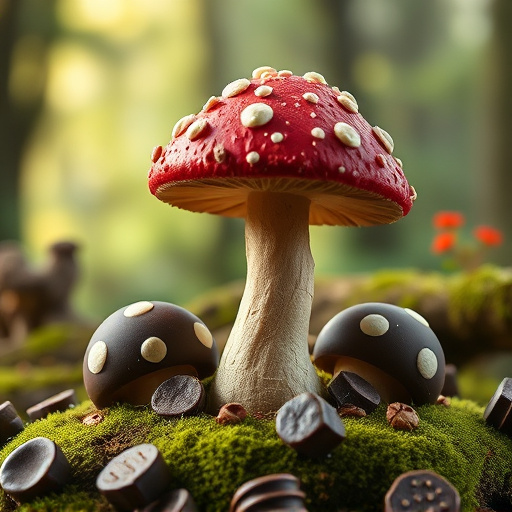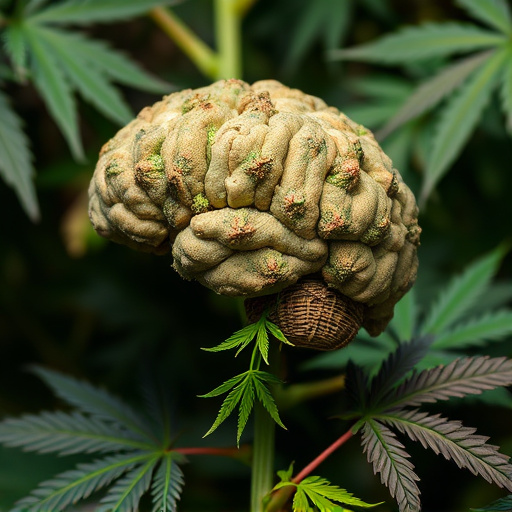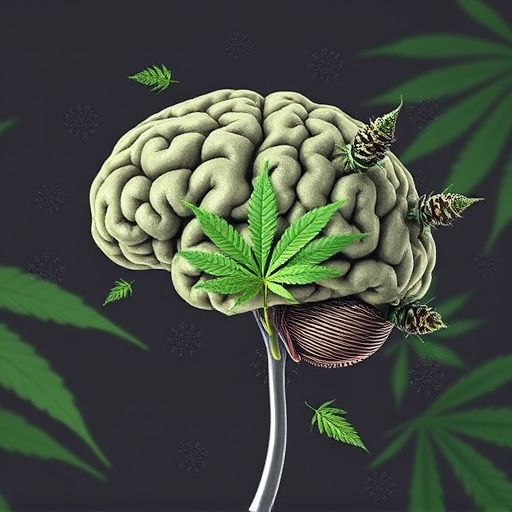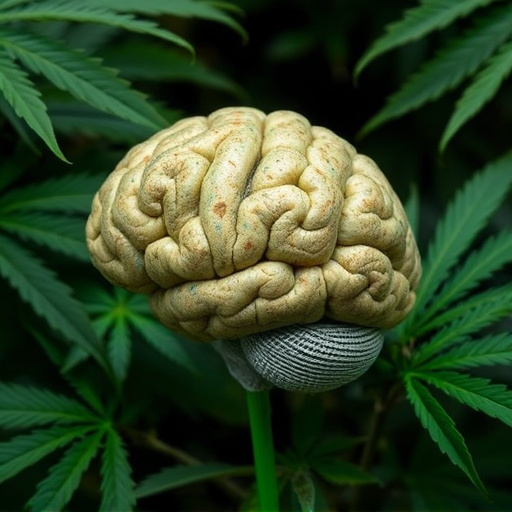The unique aroma of cannabis is primarily due to terpenes, aromatic compounds that influence scent and potential therapeutic effects, often combined with cannabinoids like THC and CBD. Certain cannabis strains for epilepsy are prized not only for their seizure-reducing properties but also for their appealing scents, which vary from fruity and floral to spicy and earthy. Terpenes and cannabinoids interact to create complex fragrances, enhancing patient comfort and treatment adherence in conditions like epilepsy. Cannabis plants have evolved sophisticated mechanisms to attract pollinators and deter predators through diverse terpene profiles and aromatic cannabinoids, offering specific health benefits such as anti-inflammatory and analgesic properties. Cultivation techniques and post-harvest curing allow growers to breed cannabis for epilepsy with both desirable therapeutic effects and distinct aromas.
Cannabis flowers are renowned for their potent aromas, which can range from earthy and woody to fruity and floral. This distinctive scent is not just appealing; it’s a result of complex chemical interactions. In this article, we explore the science behind cannabis’ strong smell, focusing on terpenes and other compounds. We delve into genetic variations that create diverse scents and how cultivation and processing techniques influence these unique aromas, even in strains known for their potential benefits, like those used for managing epilepsy.
- The Role of Terpenes and Compounds in Cannabis Scent
- Genetic Variations Leading to Diverse Scents
- How Processing and Cultivation Impact Cannabis Aroma
The Role of Terpenes and Compounds in Cannabis Scent
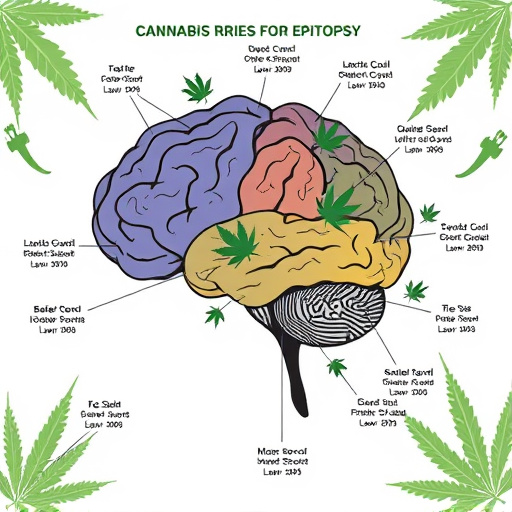
The distinctive smell of cannabis is largely attributed to the presence of terpenes, aromatic compounds that play a crucial role in both its scent and potential therapeutic effects. These terpenes, along with various cannabinoids like THC and CBD, contribute to the unique profile of each cannabis strain. In terms of medical applications, certain cannabis strains for epilepsy are renowned not just for their potential seizure-reducing properties but also for their appealing aromas, which can range from fruity and floral to spicy and earthy.
The interaction between terpenes and cannabinoids creates a complex olfactory experience. For instance, myrcene, a common terpene in cannabis, is known for its earthier scents, while linalool offers floral notes, providing a balance that makes each strain’s fragrance distinct. Understanding this intricate relationship helps users appreciate the diverse sensory experiences offered by different cannabis varieties and their potential therapeutic benefits, especially for conditions like epilepsy where both the smell and effects can be significant factors in patient comfort and treatment adherence.
Genetic Variations Leading to Diverse Scents

Cannabis plants, like many others, have evolved diverse ways to attract pollinators and deter predators. One of the most notable adaptations is their ability to produce an array of chemical compounds that contribute to their unique scents. These chemicals are primarily terpene profiles and aromatic cannabinoids, both of which play a significant role in the distinct smells we associate with different cannabis strains.
Genetic variations among cannabis plants lead to diverse terpene compositions, resulting in a wide range of odors from sweet and fruity to earthy and spicy. This diversity is not just about aesthetics; specific terpenes have been found to have therapeutic properties. For instance, some terpenes are known for their anti-inflammatory and analgesic effects, making certain cannabis strains beneficial for managing conditions like epilepsy. Therefore, the strong scent of cannabis flowers is not merely a sensory experience but also a reflection of its potential medicinal benefits, as different strains may offer varied solutions for various health concerns.
How Processing and Cultivation Impact Cannabis Aroma
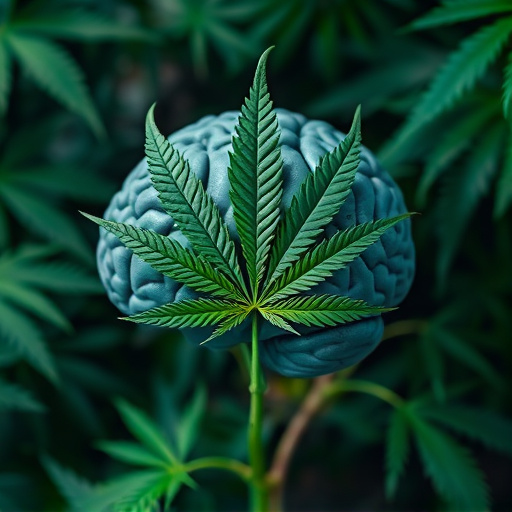
The cannabis plant’s distinctive aroma is a result of complex interactions between various chemical compounds, especially during flowering and maturation. Processing and cultivation techniques play a significant role in enhancing or altering this fragrance. When cannabis flowers, it releases volatile oils that contribute to its characteristic scent. These oils are stored in resin glands on the plant’s flowers and leaves. Different cultivation methods can impact the concentration and profile of these oils, subsequently affecting the overall aroma.
For instance, specific growing conditions like temperature, humidity, and light exposure can influence terpene production, which are aromatic compounds that give cannabis strains their unique scents. Some cultivators intentionally manipulate these factors to breed cannabis strains for epilepsy or other medical conditions, known for their distinct aromas while ensuring optimal therapeutic effects. Proper curing and trimming during post-harvest processing further refine the scent, allowing growers to select strains with desirable fragrances while meeting the desired standards for cannabis strains for epilepsy patients.
Cannabis’ strong scent is a complex interplay of various chemical compounds, with terpenes playing a pivotal role. These natural volatile oils not only contribute to the distinct aromas we associate with different cannabis strains but also offer potential therapeutic benefits, such as those explored in cannabis strains for epilepsy. Genetic diversity further enhances the variety of scents, while cultivation and processing techniques can fine-tune these aromatic profiles. Understanding these factors sheds light on why some cannabis varieties boast incredibly robust and unique smells.
